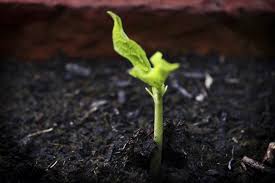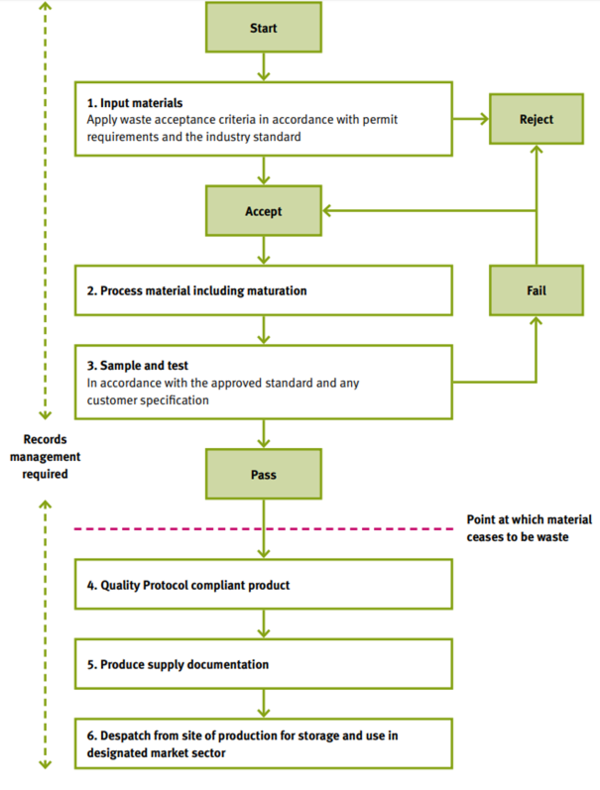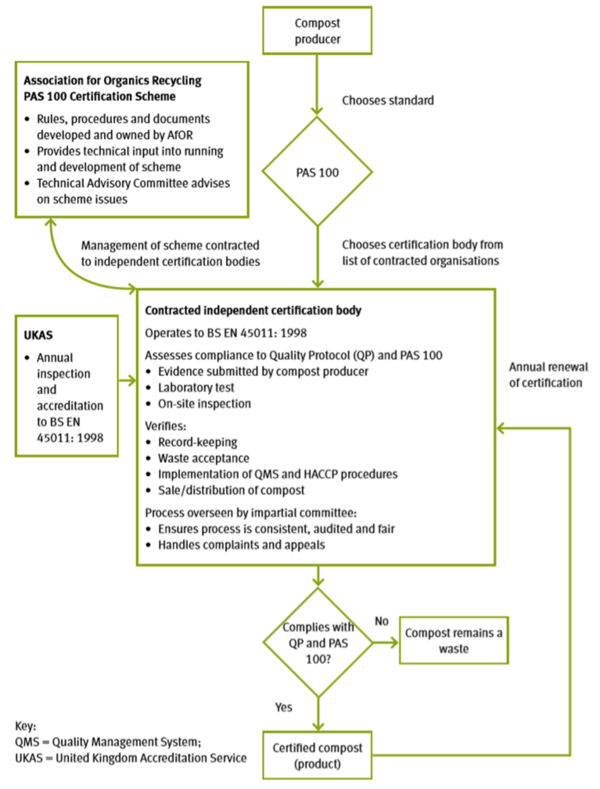PAS100: Difference between revisions
m add pic |
m add categories |
||
| Line 1: | Line 1: | ||
[[Category:Arrangements]] | |||
[[Category:Legislation & Policy]] | |||
The [[British Standards Institute]] ([[BSI]]) publishes '''BSI PAS100''' as the '''standard for the specification of compost materials''' (the previous edition PAS100:2011 having been updated by edition PAS100:2018). By complying with this standard the [[Composting]] process will create a compost that meets [[End of Waste Criteria]] and is not longer subject to waste regulatory controls. | The [[British Standards Institute]] ([[BSI]]) publishes '''BSI PAS100''' as the '''standard for the specification of compost materials''' (the previous edition PAS100:2011 having been updated by edition PAS100:2018). By complying with this standard the [[Composting]] process will create a compost that meets [[End of Waste Criteria]] and is not longer subject to waste regulatory controls. | ||
[[File:Pic of sapling in compost.jpg|300px|left|Picture of sapling growing in compost - source gardeningknowow.com]]__TOC__ | [[File:Pic of sapling in compost.jpg|300px|left|Picture of sapling growing in compost - source gardeningknowow.com]]__TOC__ | ||
Revision as of 09:45, 11 May 2020
The British Standards Institute (BSI) publishes BSI PAS100 as the standard for the specification of compost materials (the previous edition PAS100:2011 having been updated by edition PAS100:2018). By complying with this standard the Composting process will create a compost that meets End of Waste Criteria and is not longer subject to waste regulatory controls.

Background
The development of the first standard for compost was in 2005, with an update in 2011 accompanied by guidance documentations produced by WRAP and the Association for Organics Recycling (AFOR) with BSI[1]. The standard was further updated in 2018 (with an implementation in early 2019) that incorporated updates to legislation, guidance and recent scientific reports and required the 'composter' to supply composts that are fit for purpose, supported by Hazardous Analysis and Critical Point (HACCP) planning, operation of a Quality Management System (QMS), and the supply of clear information to the 'customer'/user of the compost[2].
PAS stands for Publicly Available Specification[1].
PAS100 Specification
The standard specifies requirements for the process of Composting[3][1] , the selection of input materials, the minimum quality of composted materials and the storage, labelling and traceability of compost products as well as the requirements for a QMS for compost production to ensure composts are consistently fit for their intended uses[4].
The Publicly Available Specification (PAS100:2011)[1] is a comprehensive document that helps 'composters' demonstrate due diligence in the recovery of biodegradable materials (and compliance with the Compost Quality Protocol (QP)[5] (which itself determines compliance with End of Waste Criteria), although PAS100 and the QP still requires compliance with all other relevant waste and associated legislation, including that associated with Animal By-product Material, if relevant. The process that the standard is seeking to control/manage is set out in the QP, as reproduced in the diagram below:

Whilst PAS100 is focused on the standard for Composting, PAS110 is focused on the standard for Anaerobic Digestion, although some Digestate from Anaerobic Digestion is allowed as input material to the composting process under the QP.
The Quality Protocol (QP)
The QP[5] sets out the approach to Composting in order to meet End of Waste Criteria and, as a result, for the compost to no longer be subject to waste regulatory controls. The QP has been adopted by England, Wales and Northern Ireland, with PAS100 being the standard that England and Wales have chosen to demonstrate compliance with the QP. The relationships between certification and accreditation are set out in the figure below (reproduced from the QP):

Amongst the other criteria set out in the (QP) (to demonstrate the point at which waste management controls are no longer needed, confidence of an approved standard, and protecting human health and the environment) it includes a list of source segregated biodegradable waste (listed by EWC code) that is suitable for the Composting process and ultimate end use.
References
- ↑ 1.0 1.1 1.2 1.3 PAS 100:2011 Specification for Composted Material
- ↑ AFOR Website link
- ↑ This PAS is for composts from a composting system fed only by source segregated biowastes and/or biodegradable non-waste materials. It does not apply to composting activities that do not require registration with the regulator, such as composting at home
- ↑ Link to BSI Shop
- ↑ 5.0 5.1 Quality Protocol - Compost
